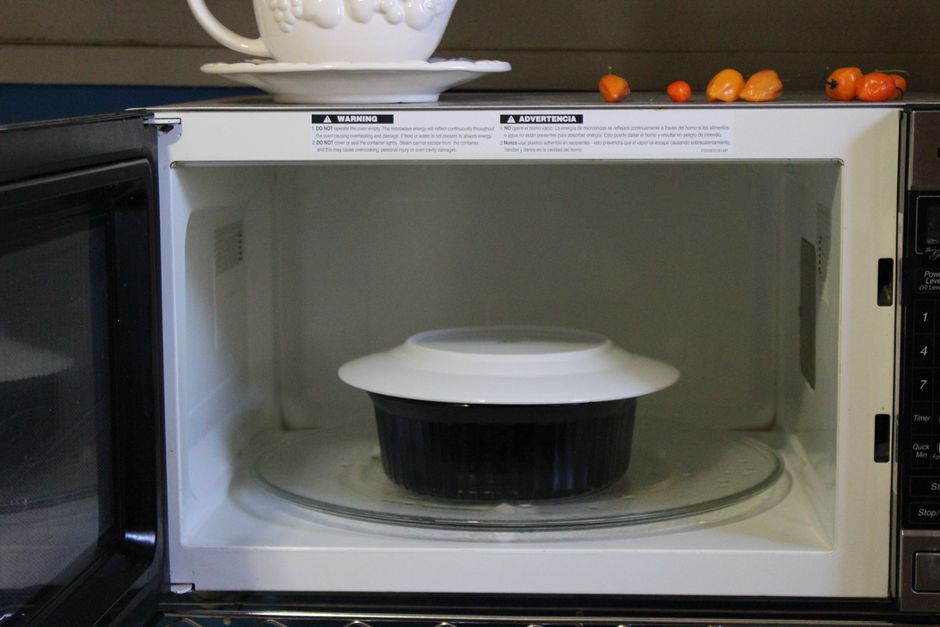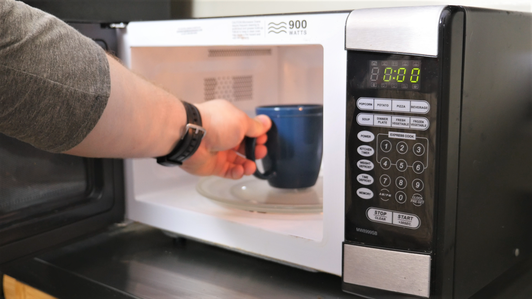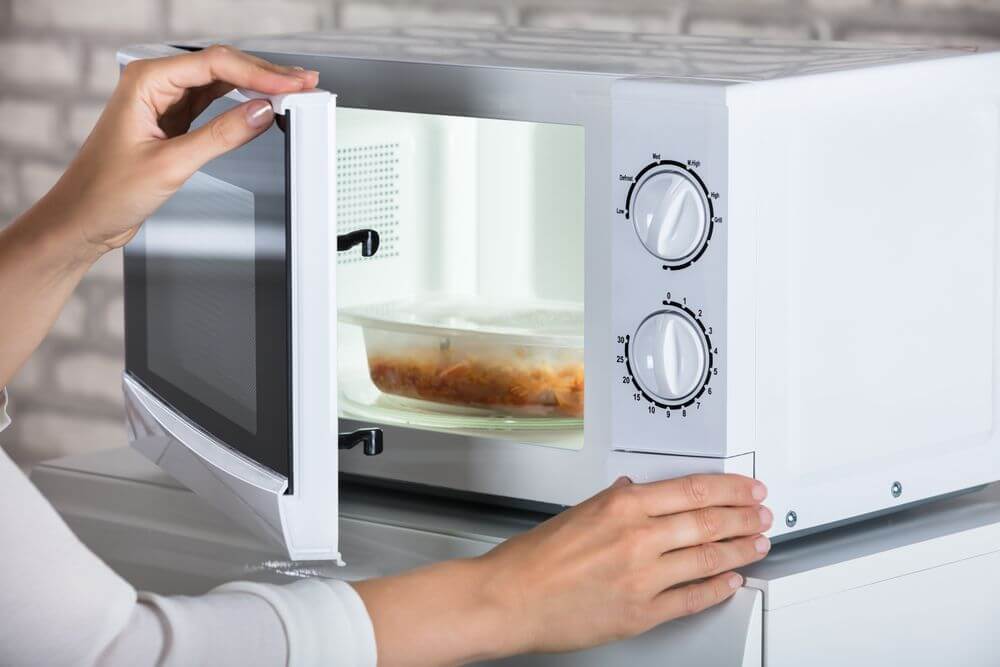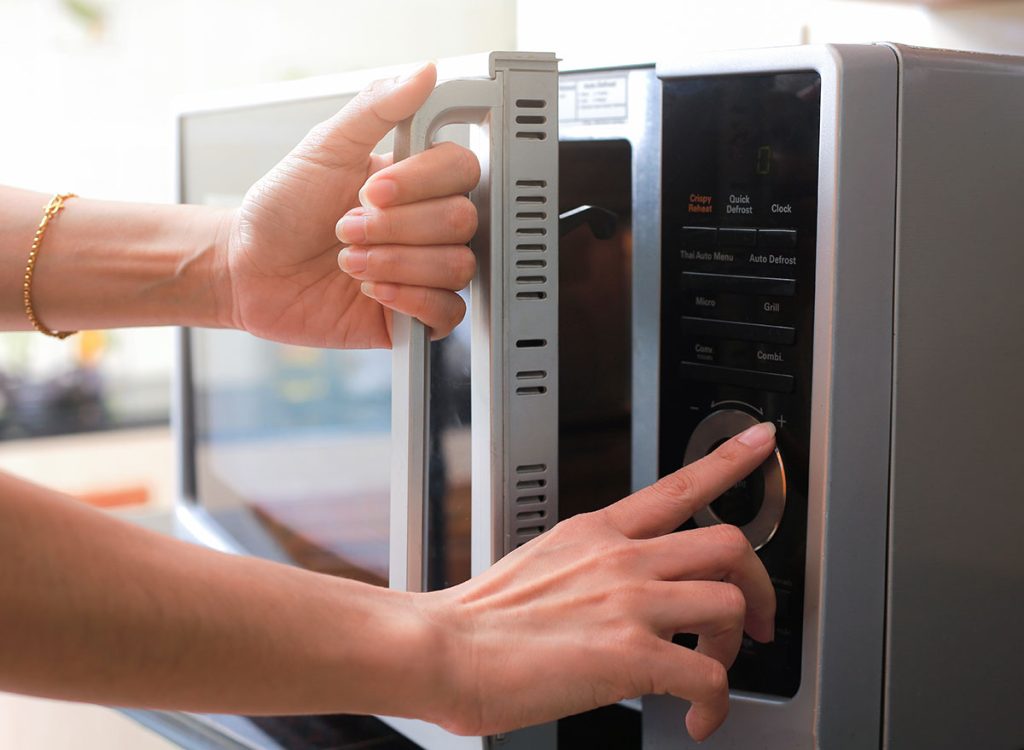Why do microwaves cause food to get mushy?

Microwaves are a speedy and straightforward method to prepare our food, but they may also make it mushy at times. If you’ve ever eaten a delicious meal, only to have the leftovers turn into a soggy mess in the microwave, you’ve undoubtedly wondered why. Why do microwaves cause food to become soggy? Water molecules in food move due to the electromagnetic radiation used to heat it. The friction created by such action generates heat, heats the food or drink in the microwave. Because moisture cannot escape the microwave, it condenses in the food, making it mushy. Microwaves are an essential component of the majority of our kitchens. We use them every day but rarely think about them, so we may as well learn a bit more about how they heat our food. We’ll figure out what makes the water wiggle and how to avoid soggy meals.
The Science Behind It

You might recall something like this from high school science class. Microwaves, unsurprisingly, utilize a kind of electromagnetic energy known as microwaves. Microwaves use electromagnetic radiation to heat their meals. Microwaves are one form of electromagnetic wave, including radio waves, infrared light rays, visible light waves, ultraviolet light waves, x-rays, and gamma rays. On the electromagnetic spectrum, microwaves may be found between radio waves and infrared radiation. Most microwave ovens operate at 2,450 megahertz (or MHz) frequencies. Electromagnetic radiation is made up of both electric and magnetic fields that oscillate perpendicularly to one another. Each second, their magnitude and direction change.
The heating procedure is as follows:
- When you switch on your microwave, electrical energy is used by a vacuum tube called a magnetron to transport microwaves through a waveguide to the heating chamber.
- This energy causes the vibration of the water molecules in the meal. Water molecules have one end that is positively charged and the other that is negatively charged. The two ends rock back and forth to coordinate with the electric waves created by the electromagnetic radiation.
- The friction caused by this action generates heat in the heating chamber, which is absorbed by water molecules in the food.
And because there is nowhere for the moisture created by this to escape, we may end up with mushy food. This does not occur when we cook food in an oven because ovens employ a distinct technique that warms the food from the outside and then transfers the heat to the inside. This keeps the outside of the meal crispy. However, because microwaves bounce about the heating chamber of a microwave oven, cooking all food simultaneously makes it more difficult for food to remain crispy. Contrary to popular opinion, Microwaves heat food from the inside out, as opposed to ovens, which heat from the outside in. While it is valid for an oven, a microwave warms all sections of the meal simultaneously. However, as you’ll see in one of the suggestions below, the heat isn’t perfectly equal.
Tips for Making Food Less Soggy

So, now that we know why microwaves make our food wet let’s look at some tips and tactics for making it less soggy.
- While reheating your pizza in the microwave, place a small, microwave-safe cup or dish filled with water next to the pizza. This additional water absorbs part of the microwaves that would have otherwise gone directly to the pizza, reducing the quantity of moisture in the pizza. Make cautious not to overheat the meal.
You wouldn’t want the water to boil since it would generate water vapors, which will negate the purpose. Check out this post for a more technical explanation of how this works. You’ll be able to educate your buddies about “water dielectric constants.”
Protip: While you don’t want the water to boil while preparing the pizza, it should be warm. Cleaning the interior of your microwave with water is a good idea. Bring some water to a boil. Place the lemon slices in it and close the microwave lid for a few minutes. This will make cleaning a breeze.
- Underneath your food, place a paper towel or a piece of parchment paper. This will absorb some extra moisture and keep it from getting into the meal.
- Keep an eye on the cooking time at all times. Foods with a greater water content often cook faster because the higher water content absorbs heat faster than a product with lower water content.
- If your plate is small enough, avoid putting it in the center of the microwave. Place it slightly to the side. If your dish is too large for this, consider arranging the food around the outside of the platter. Because the heating chamber does not equally heat every region of the microwave, and the middle of the microwave is frequently a cooler location, this will help your food heat more evenly.
In a word, the key to making your meal less soggy is to consider elements such as the water content of the dish and the cooking time.
Microwaving Different Types Of Food

Different sorts of food will produce varied effects. When reheating a slice of pizza, it is more prone to become soggy. When you reheat pasta, it is more prone to dry out. As a result, it’s critical to evaluate the sort of food you’re working with. There might be a delicate line between being too soggy and too dried out when using a microwave. If you want to microwave multiple types of food simultaneously, you may want to do it individually to heat each one correctly. Also, when choosing the required cooking duration, keep in mind the wattage of your microwave. And there are always those things that taste better after being heated in the oven. For example, leftover french fries are notoriously tricky to microwave successfully. If you have the option, cook them in the oven. Better still, eat them while they’re still hot; they don’t need to be reheated in any way. This is especially true if you want them crunchy. Microwaves, like many of our greatest technologies, were found by mistake. In 1945, a radar engineer discovered that the microwaves had melted a candy bar in his pocket. The microwave oven was created as a result of the chance finding.
Conclusion
Microwaves are an excellent method to prepare or reheat meals. They are a great alternative whether we need a fast supper on the run or quickly reheat leftovers. However, we occasionally lose what we gain in convenience in food quality. Keep these things in mind when you want to reheat a leftover piece of pizza and wonder why it turned out soggy.











